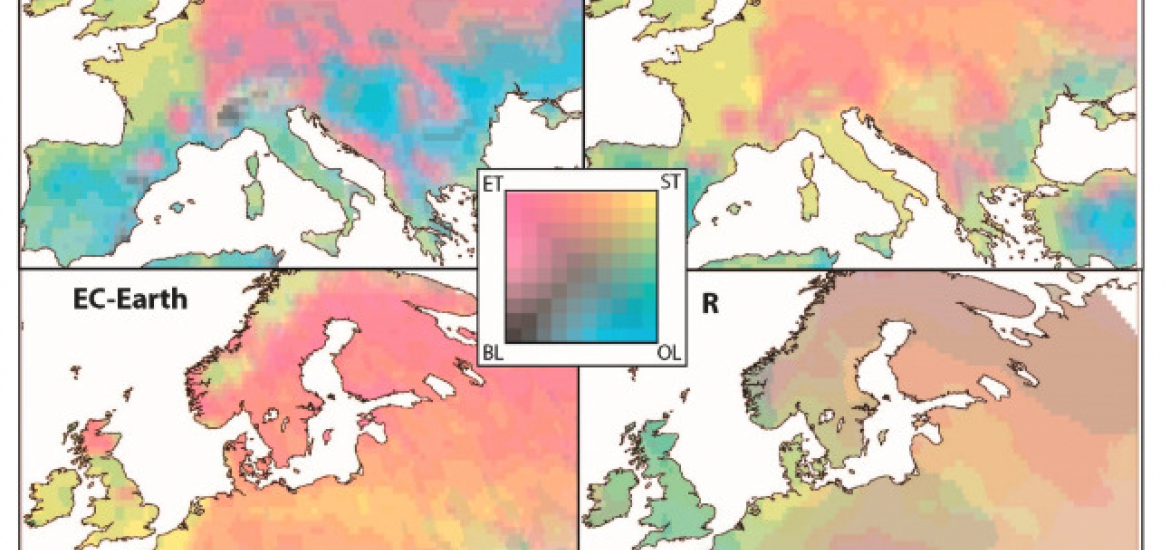- Home
- All News Overview
- Mid-Holocene European Climate Revisited: New High-resolution Regional Climate Model Simulations Using Pollen-based Land-cover

Monday, 14 March, 2022
Strandberg G et al. have published "Mid-Holocene European climate revisited: New high-resolution regional climate model simulations using pollen-based land-cover".
It is now widely accepted that the biophysical effects of land cover change can have an important impact on climate, particularly at the local scale. The Mid-Holocene was a time when the land cover of Europe was very different than today, with what is thought to be much less human impact and more extensive forest cover. In this study Standberg et al. use the mid-Holocene to study the impact of land cover change using two different high-resolution regional climate models that are thought to represent land cover processes better than lower resolution GCM’s that are usually used to study this time period.
The mid-Holocene land cover is represented by both a simulation of potential vegetation based on a dynamic vegetation model driven by climate model output, and a reconstruction of actual vegetation based on the REVEALS method using pollen data. Differences between the potential and actual vegetation suggest lower than expected forest cover at the mid-Holocene, which Standberg et al. interpret as a result of early anthropogenic activity. By also demonstrating differences between climate model simulations using these two contrasting land covers, Standberg et al. are able to show that even during the mid-Holocene, anthropogenic modification of the landscape was sufficient to cause a significant modification of climate at the local scale.
> Access the article
> More information about the LandCover6k former working group